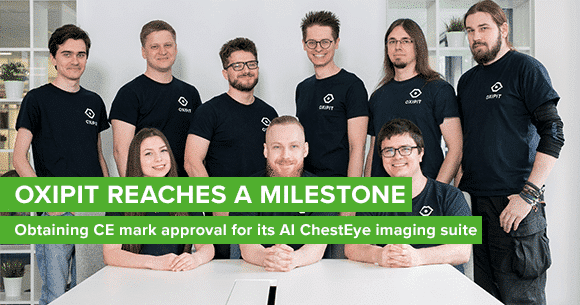Meet our CODE_n CONTEST Finalists 2016: Valsight from Germany
All good things go by thirteen! Here we are with our last Applied FinTech finalist for the CODE_n CONTEST: Valsight. The Berlin based startup deals with the integration of value driver trees and advanced analytics into the controlling processes of planning, reporting and forecasting. How that works? Managing Director Khai Tran gives the answer!
What is Valsight all about? How did you come up with the idea?
 Khai: Valsight is a SaaS solution for enterprise performance management and financial modeling based on value driver trees. The core of our software is a visual modeling editor with a powerful simulation engine that can be used to create financial models, for simulation-based planning and forecasting with predictive analytics. It makes financial controlling more focused and goal-driven by making processes more transparent, flexible and efficient. Our software is especially designed for the needs of management and financial analysts. No programming skills are needed to build financial models or to simulate different scenarios.
Khai: Valsight is a SaaS solution for enterprise performance management and financial modeling based on value driver trees. The core of our software is a visual modeling editor with a powerful simulation engine that can be used to create financial models, for simulation-based planning and forecasting with predictive analytics. It makes financial controlling more focused and goal-driven by making processes more transparent, flexible and efficient. Our software is especially designed for the needs of management and financial analysts. No programming skills are needed to build financial models or to simulate different scenarios.
Our founding team came up with the idea for Valsight during many years of research with in-memory technology at the Hasso-Plattner-Institut in Potsdam. The growing importance of simulation and predictive methods in financial management combined with the maturity of in-memory technology for ultra-fast calculations was the ideal starting point. We have tested our approach early on with a Fortune 500 company, and have since then focused on building state-of-the-art SaaS software to dramatically improve corporate controlling and financial modeling.
“Digital Disruption“ – that’s the motto of this year’s CODE_n CONTEST. What makes your solution innovative, what makes it disruptive?
Khai: The idea of Valsight is to improve traditional controlling and financial modeling processes with methods like simulation and advanced analytics. Our focus is to empower business users to create complex and multidimensional models themselves and to benefit from statistical and predictive features. The core challenge is to keep a strong focus on the needs of the finance community in order to make even complicated functions easy and intuitive to use.
Think of it as HTML markup writing in the early days of the world wide web, compared to today’s template-based WYSIWYG website editors. In all areas where people deal with financial data and KPIs, a simple visualization of models, the easy integration of data, multiple simulations and a coherent analysis is needed. Users in investment banking, business analysts and strategy consultants would normally rely on spreadsheet applications to build such models. Spreadsheets have been around forever, and nobody has really tackled their role by offering a new, reliable, and user-friendly approach. We want to change that.
On the domain side, we found the approach of simulation based planning to bring the highest benefit to the controlling and finance departments. Essentially, simulation-based planning means a company focuses on key drivers of financial performance, rather than planning with the highest possible amount of detail. This fundamental change in how corporations conduct planning is a disruption in itself, as it aims at eliminating the detailed corporate planning processes. With simulation-based planning, users can create plan scenarios based on top-down assumptions and measures, and analyze their effects on financial performance. This dramatically increases the flexibility in the planning process, reduces efforts and results in higher commitments to plans and goals.
You’re one of the 13 finalists in the Applied FinTech contest cluster. Which challenges do you think young companies have to face in this sector? How do you handle these challenges?
Khai: A big challenge for a young company like ours is the focus on the complex problems of the finance department. There are two main aspects related to this: On the one hand, a new solution potentially affects multiple, complex business processes and changes the way a lot of people within a company do their work. On the other hand, finance processes highly depend on a company’s individual business model and management approach. This means that every use case is tailored to the specific needs of the customers, and in-depth domain knowledge is expected of those providing a solution.
We worked around these challenges by building a flexible platform that allows to easily build generic models and workflows without any programming skills. This helped us tackle a lot of the requirements and different approaches that our clients demand. In addition, we were very lucky to be able to rely on an experienced and insightful board to support us from day one. As an example, this includes Dr. Werner Sinzig, a former director at SAP and Professor at several universities, who regularly shares his insights with us.
Another challenge we face are the long sales cycles in B2B markets and especially when it comes to central financial systems. This is particularly critical as a young startup that has to iterate quickly and improve ideas. We have found that a pilot project based approach can help to kick things off and to achieve concrete results in a very short time frame. This keeps the risk and efforts at a minimum, but allows to quickly show first benefits for both sides.
Big data is often criticized for its potential security hazards and clients’ trust is a very important factor in the financial industry. Is it hard for you as a startup to gain that trust in competition with traditional firms?
Khai: In this regard, we don’t believe that we have different or bigger problems than the more established players in this industry. Companies – especially in the D-A-CH region – are still skeptical about big data and cloud-based offerings especially when they evolve around future-oriented financial data. Cloud offerings are perceived as a potential risk factor, and the general notion is that data is safe when it’s kept within a company’s own network and data centers. However, once we have conducted a pilot at a client’s company, passed their security and penetration test and proven the business value of our solution, the discussion quickly shifts from “is it really safe to store financial data in the cloud” towards “how else can we as a company benefit from your software”.
In the end we believe that cloud and SaaS in finance won’t be a problem in the long-term. The SaaS wave started with CRM solutions (= sensitive customer data) and HR solutions (= sensitive employee data, especially with the German “Bundesdatenschutzgesetz”), and today there are lots of examples where a cloud-solution is the de-facto standard in these areas. To us, seeing the majority of finance software solutions move to the cloud is only a matter of time.
Thanks so much for the interview, Khai!






Write a comment